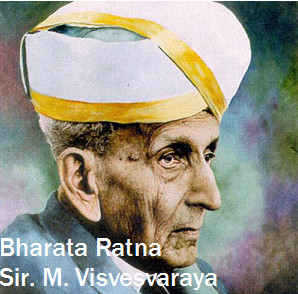Kajal Yadav
Albert Einstein once said, “Scientists investigate that which already is, Engineers create that which has never been.”
Nation-building is not only about politics or governance, nor merely about economic reform; rather, it is a foundation upon which a society can develop, prosper, and sustain itself. The individuals who drive innovation and solve complex problems are the engineers.
As we celebrate the 58th year of International Engineers’ Day, we honor the legacy of Sir M. Visvesvaraya, whose contributions to civil engineering and public service earned him the prestigious Bharat Ratna. His visionary work led to the creation of remarkable infrastructure across Hyderabad, Mysore, Maharashtra, and Orissa.
On this special day, we recognize his enduring impact on technical advancement, sustainable development, and the continued growth of our nation.
Vision of Sir M. Visvesvaraya
The rise of Sir M. Visvesvaraya was not something that could be achieved in just a few days, nor simply by being an engineer. So why did his birthday become Engineers’ Day? Because his journey was long and demanding.
For the first 20 to 30 years of his career, he was a regular civil engineer. The turning point came when he became the Diwan of Mysore, a princely state—equivalent to the role of a prime minister—after serving as the Chief Engineer of Mysore. His dedication as Diwan helped him gain a more prominent position in political affairs and made it easier for him to implement his broader vision for the state.
His ambition to build a modern society based on higher industrial production and improved living standards was inspired by his visits to Japan and the United States. His approach centered on using science and technology to tackle various challenges, including social issues. Guided by a utilitarian belief, he held that by deploying the right technology and knowledge, organizing resources effectively, and applying thoughtful planning, society could achieve greater prosperity and modernization.
Visvesvaraya was not only an engineer but also a reformer and administrator. His vision aimed to create a society free from unnecessary rituals, rigid hierarchies, and caste discrimination. Through industrialization and modernization, he positioned himself as a social reformer. He upheld democratic ideals and liberal principles, encouraging public participation and inclusive development.
After Independence
After 1947, India faced a monumental task: building its infrastructure, institutions, and industries. This responsibility was entrusted to engineers. Large-scale projects like the Bhakra Nangal Dam and other multipurpose river valley initiatives were handed over to them. These projects not only provided irrigation and electricity but also instilled confidence in a young nation striving for self-sufficiency.
The establishment of institutions such as the Indian Institute of Technology (IITs) underscored the importance of engineering education. Graduates from these institutions have contributed significantly across sectors—including railways, space, and defense.
Engineers are not limited to traditional fields alone. They play vital roles in organizations like ISRO and DRDO. Without their expertise, landmark achievements such as Aryabhata and Chandrayan would not have been possible.
Contemporary India Engineers and their challenges
Globalisation refers to the flow of technology, economy, knowledge, people, and values across nations. India holds one of the world’s largest pools of technically and professionally trained human resources. With the opening of our economy, engineers found themselves at the forefront of this transformation. They played a crucial role in developing software, building IT infrastructure, and driving the digital revolution that now touches nearly every aspect of our lives.
The startup ecosystem has flourished thanks to these engineers, who combined technical expertise with entrepreneurial spirit. This not only boosted innovation but also created job opportunities across the globe.
Despite these impressive achievements, India faces challenges such as brain drain. Many talented students pursue education here but choose to work abroad, leading to significant migration and a loss of skilled individuals. To address this, the government has promoted a startup culture, encouraging innovation and entrepreneurship within the country.
However, as this initiative gained momentum, a new challenge emerged: the need for environmental sustainability. Engineers are now tasked with designing eco-friendly products and solutions that reduce carbon footprints and support a greener future.
The vision of Atmanirbhar Bharat urges engineers to launch startups in sectors like agriculture, healthcare, and defense. Alongside this, the government emphasizes ethical responsibility—ensuring that these companies respect citizens’ privacy and contribute to a healthy, sustainable living environment for all.
Conclusion and Way Forward
Engineers do not merely construct bridges, build roads, or write code—they create connections, opportunities, and hope. Through their work, they lay the foundation for a nation’s continued growth and development. This was the vision of Sir M. Visvesvaraya, and it serves as a guiding path for every engineer’s journey.
With the rapid advancement of technology and the rise of artificial intelligence, the role of engineers is evolving. No longer confined to traditional design, they are stepping into a multidisciplinary landscape of problem-solving. This shift reflects the enduring spirit of Visvesvaraya—his unwavering dedication to serving the nation through innovation, progress, and purpose.





